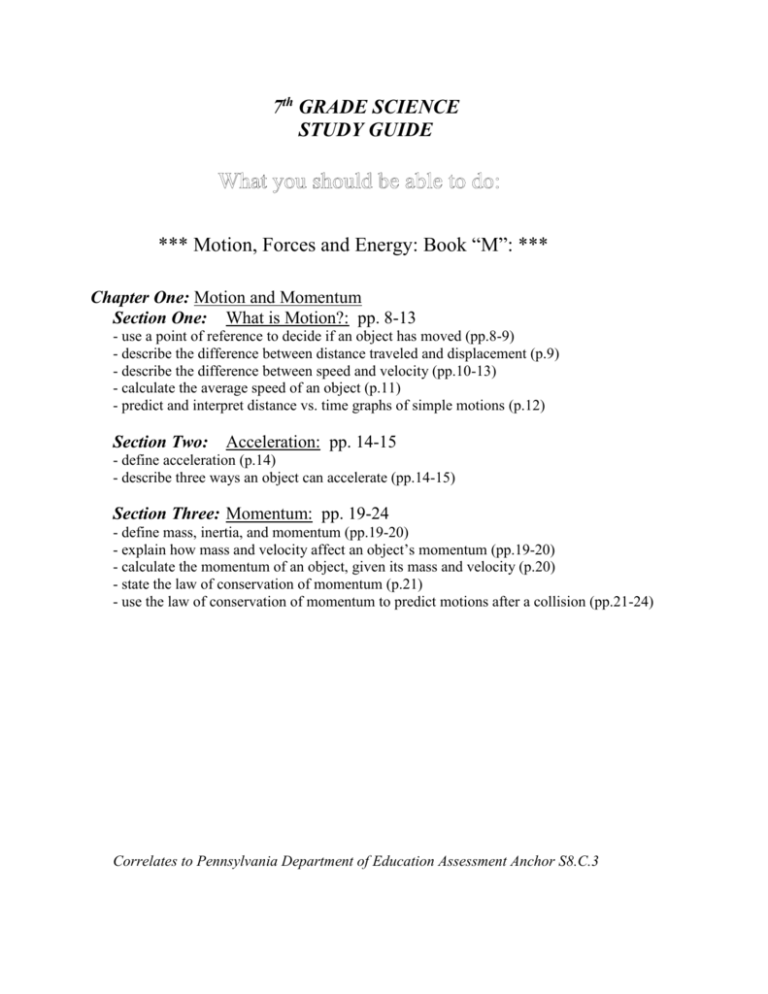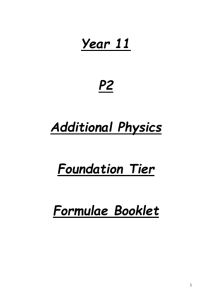Study Guide - Motion and Momentum - mshopland
advertisement

7th GRADE SCIENCE STUDY GUIDE *** Motion, Forces and Energy: Book “M”: *** Chapter One: Motion and Momentum Section One: What is Motion?: pp. 8-13 - use a point of reference to decide if an object has moved (pp.8-9) - describe the difference between distance traveled and displacement (p.9) - describe the difference between speed and velocity (pp.10-13) - calculate the average speed of an object (p.11) - predict and interpret distance vs. time graphs of simple motions (p.12) Section Two: Acceleration: pp. 14-15 - define acceleration (p.14) - describe three ways an object can accelerate (pp.14-15) Section Three: Momentum: pp. 19-24 - define mass, inertia, and momentum (pp.19-20) - explain how mass and velocity affect an object’s momentum (pp.19-20) - calculate the momentum of an object, given its mass and velocity (p.20) - state the law of conservation of momentum (p.21) - use the law of conservation of momentum to predict motions after a collision (pp.21-24) Correlates to Pennsylvania Department of Education Assessment Anchor S8.C.3 *** Motion, Forces and Energy: Book “M”: *** Chapter One: Motion and Momentum Section One: What is Motion?: pp. 8-13 - An object is in motion, if the position of the object is changing, when compared to a reference point. - The displacement of an object includes the distance traveled and the direction of motion. - The speed of an object equals the distance traveled divided by the time: distance speed = -------------time - The velocity of an object includes the speed and the direction of motion. - The motion of an object can be represented on a distance vs. time graph: Distance (m) Graph of Motions Time (sec) Section Two: Acceleration: pp. 14-15 - Acceleration is a measure of how quickly velocity changes. It includes the direction. - Acceleration occurs whenever an object speeds up, slows down, or changes direction. Section Three: Momentum: pp. 19-24 - Mass is the amount of matter in an object. - Inertia is the tendency of an object to resist a change in motion. Inertia increases as the mass of an object increases. - The momentum of an object is related to how hard it is to stop the object, and can be calculated using the following equation: momentum = mass X velocity - The law of conservation of momentum states that in a collision, the total momentum of the objects that collide is the same before and after the collision.








